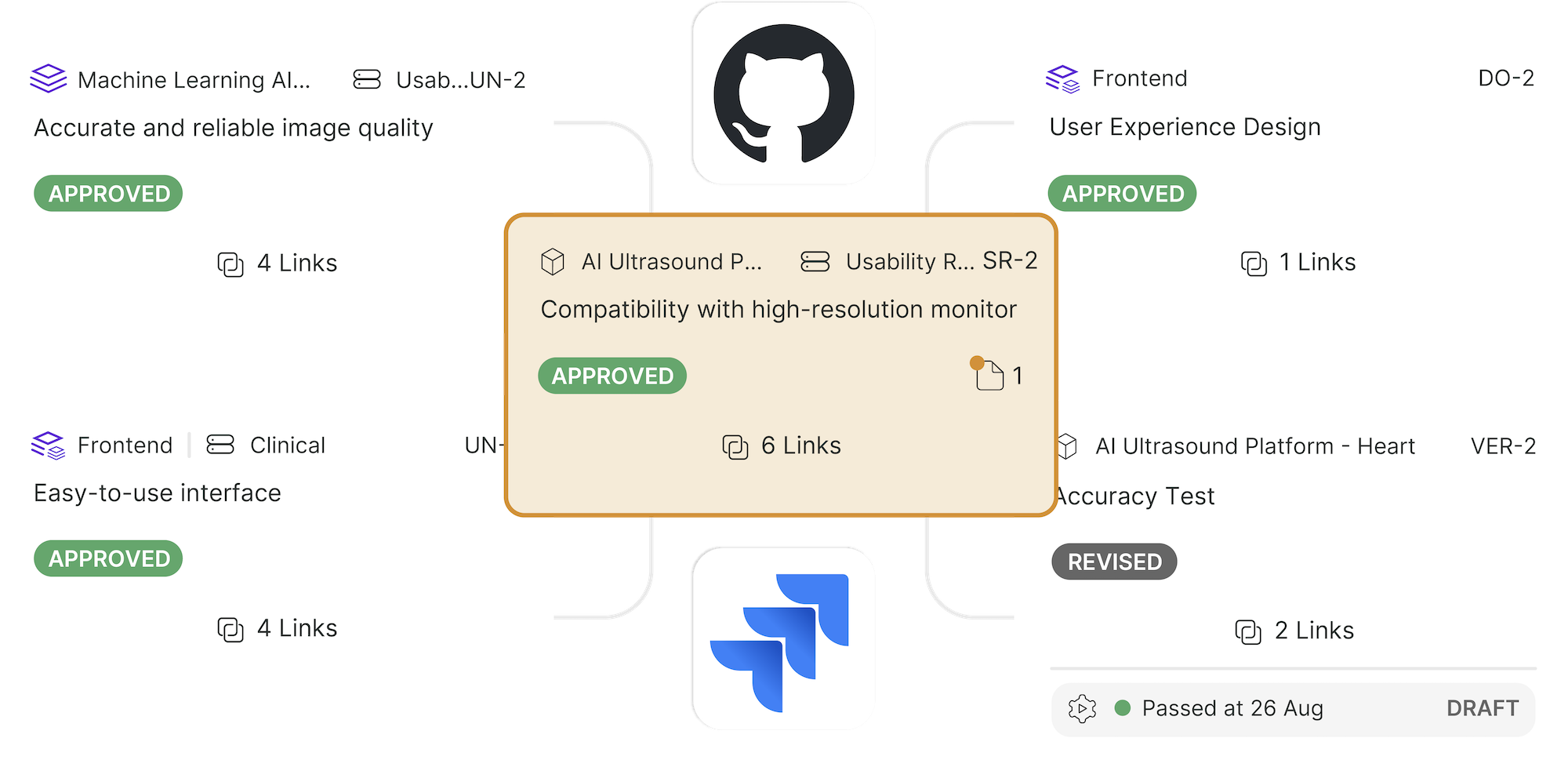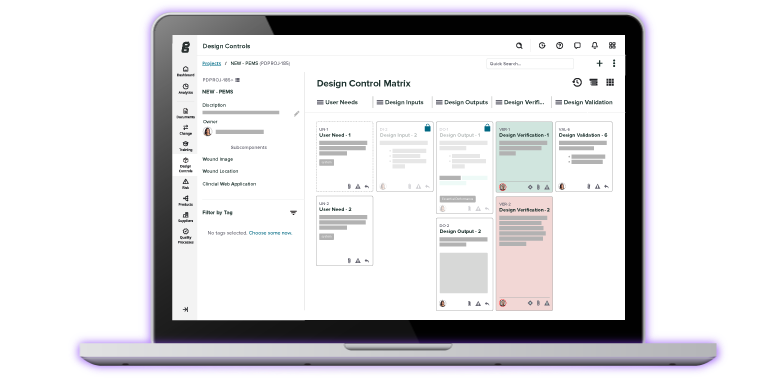FDA Guidances on AI-Enabled Devices: Where AI Stands in 2025

As part of their effort to address the changing landscape around AI in medical devices, FDA has recently released two new guidance documents on artificial intelligence-enabled device software functions (AI-DSF):
- Artificial Intelligence-Enabled Device Software Functions: Lifecycle Management and Marketing Submission Recommendations (Draft Guidance)
- Marketing Submission Recommendations for a Predetermined Change Control Plan for Artificial Intelligence-Enabled Device Software Functions (Final Guidance)
Let’s take a look at both documents, how they impact MedTech companies, and what they can tell us about how FDA views AI right now.
BONUS RESOURCE: Click here to download our FDA pre-submission meeting checklist for free!
Lifecycle management and marketing submissions for AI-enabled devices
The first guidance, which has not been finalized, aims to provide a comprehensive roadmap for AI-DSF manufacturers navigating the FDA’s regulatory framework.
Artificial Intelligence-Enabled Device Software Functions: Lifecycle Management and Marketing Submission Recommendations provides recommendations for the contents of marketing submissions for AI-enabled devices, as well as recommendations for the design and development of these devices through the total product lifecycle (TPLC).
Basically, FDA is laying out a comprehensive approach to lifecycle management for AI-enabled devices—from design and development to postmarket surveillance. It’s a lot to cover, and FDA has not skimped on the recommendations. The guidance runs to 67 pages and includes six appendices for further clarification.
The majority of the guidance is given over to Chapter III, TPLC Approach: General Principles. In Chapter III, you’ll find recommendations for the different elements of a TPLC approach for AI-enabled devices, including:
-
User interface and labelling
-
Risk assessment
-
Data management
-
Model description and development
-
Validation
-
Device performance monitoring
-
Cybersecurity
-
Public submission summary
For each of these, FDA has included a thorough description which includes the answers to each of these three questions:
-
Why should this information be included in a submission for an AI-enabled device?
-
What should sponsors include in a submission?
-
Where should sponsors provide this information in a submission?
Taken as a whole, the document provides MedTech companies using AI-DSF with a structured framework for marketing submissions and device development, as well as recommendations for addressing transparency and potential bias within their products.
The Predetermined Change Control Plan (PCCP): facilitating iterative improvements
The second guidance document, Marketing Submission Recommendations for a Predetermined Change Control Plan for Artificial Intelligence-Enabled Device Software Functions, is the finalized version of a draft FDA released in 2023.
A Predetermined Change Control Plan (PCCP) is a document that describes any modifications that will be made to AI-DSF and how those modifications will be assessed.
Why is a PCCP necessary?
A PCCP is necessary for devices with AI-DSF because, by definition, a machine learning algorithm is learning from the data that is put into the system. It then has the potential to change its output based on what it’s learned from those inputs.
For example, a diagnostic tool may get better at detecting a certain type of cancer as it sees more images of both cancerous and benign cells and is able to determine which is which.
The catch here is that changes that result in iterative improvements to the algorithm are technically changes to the device. And traditionally, a change like that could require a manufacturer to submit a Special 510(k), De Novo submission, or PMA supplement, depending on the device’s regulatory pathway.
To avoid a situation where manufacturers are constantly re-submitting to FDA as their algorithm learns, the agency is saying that MedTech companies may instead use a Predetermined Change Control Plan—laying out the boundaries of any changes to the algorithm in advance. By obtaining FDA authorization for this plan as part of the initial marketing submission, manufacturers can implement approved modifications without needing additional submissions.
Components of a PCCP
Though the PCCP can become complex depending on the device, its essential parts are fairly straightforward. You need to be able to describe the modifications that will occur, how you’ll implement them, and an assessment of their risk and benefits. Here’s what the FDA expects in a PCCP:
-
Description of Modifications: This section details the planned changes, such as retraining algorithms or incorporating new datasets, and how they support device improvements.
-
Modification Protocol: This includes specific methodologies for:
-
Data management practices.
-
Retraining algorithms.
-
Performance evaluation.
-
Update procedures to ensure consistent safety and effectiveness.
-
-
Impact Assessment: Manufacturers must evaluate the risks and benefits of proposed changes and outline risk mitigation strategies.
Integrating AI into the regulatory framework
AI-enabled devices hold the potential for some exciting new opportunities in MedTech, but they are still medical devices, and they are still regulated as such.
Both of these guidance documents can be viewed as an attempt to help integrate AI into the existing regulatory schema, providing guardrails for patient safety without stifling innovation. When we look at the PCCP, for instance, we can see FDA recognizes that machine learning does not fit neatly into the older regulatory requirements, and the agency is working to make recommendations to accommodate that.
And in the guidance on marketing submissions and development, FDA has spilled considerable ink aligning AI-DSF with the TPLC approach to device manufacturing, taking into account how AI-enabled devices differ from more traditional devices.
It’s unlikely these will be the last guidance documents that FDA releases on AI-DSF. As the technology matures and both industry and regulators learn more about the benefits and risks of AI, we’ll certainly see more recommendations coming from FDA.
BONUS RESOURCE: Click here to download our FDA pre-submission meeting checklist for free!
Stay on the right side of regulations with QMS software that’s purpose-built for MedTech
There’s a lot of change and uncertainty going on right now when it comes to the use of AI in MedTech. But what haven’t changed (and won’t be anytime soon) are the regulatory requirements around your QMS.
Whether you’re working on an AI-enabled device or just a good old fashioned catheter, the best way to stay on the right side of regulations is to use a QMS that’s built specifically and exclusively for the MedTech industry.
With Greenlight Guru’s QMS software, you get a scalable quality management system with end-to-end traceability, helping you stay audit ready at all times. Our QMS comes aligned with 21 CFR Part 820 and ISO 13485:2016, so you can ensure compliance with regulatory requirements from the very start.
If you want to see how a purpose-built QMS can help you deliver high quality medical devices to patients, then get your free demo of Greenlight Guru today ➔
Etienne Nichols is the Head of Industry Insights & Education at Greenlight Guru. As a Mechanical Engineer and Medical Device Guru, he specializes in simplifying complex ideas, teaching system integration, and connecting industry leaders. While hosting the Global Medical Device Podcast, Etienne has led over 200...
Related Posts
What is a Predetermined Change Control Plan (PCCP) and Who Needs One?
Understanding Change Management and Change Control in the Medical Device Industry
How to Manage Complex Downstream Design Changes to Your Medical Device
Get your free download
FDA Pre-Submission Meeting Checklist for Medical Device Companies











